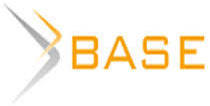The phenomenon of Soviet fashion: the clash between socialist ideology and consumers' fashion desires
The author focuses on the phenomenon of Soviet fashion. A feature of the author's approach to the topic is the identification of ideological reasons for the formation of a gap between the official fashion discourse (fashion shows, exhibitions, publications in women's magazines, specialized publications of fashion houses) and fashion as part of everyday culture. A brief historical overview of the transformation of consumer attitudes in the field of clothing consumption in Soviet society from the 1920s to the onset of the thaw is made. The reinterpretation of fashion discourse in the 1950s is analyzed from the point of view of the historical and cultural context of the era, as well as the previous stages of the existence of fashion in the USSR. The main features of the Soviet style are highlighted, its inconsistency is emphasized. The phenomena of socialist fashion and the fashion of European countries are compared, for which both materials expressing the official rhetoric of the authorities about European fashion and articles containing sociological research on the Soviet everyday culture of the regions are used. The author analyzes the change in the visual representation of fashion on the pages of Soviet publications at different stages of the existence of the Soviet state. In addition, the article considers examples of understanding the concepts of "modernity", "fashion" in women's magazines of the 1960s and 1970s, which is important for understanding the processes of legitimization of consumer culture in the USSR. Thus, an important part of the work was the process of reflection on fashion discourse in Soviet society. The empirical basis for the research was the publications of the magazines "Rabotnitsa", "Krestyanka", "Fashion Magazine", "Models of the season", pictures of European cinema.

















While nobody left any comments to this publication.
You can be first.
Bartlett, Dj. (2011), FashionEast: prizrak, brodivshiy po Vostochnoy Evrope [FashionEast: The spectre that haunted socialism], Translated by E. Kardash, New Literary Observer, Moscow, Russia (in Russ.).
Bartlett, Dj. (2021), “Socialist dandies international: East Europe, 1946-59”, Teoriya mody: odezhda, telo, kul'tura [Fashion theory: clothing, body, culture] 2, 79-132 (in Russ.).
Burova, M. D. (2022), “Bright look of socialist dream – the role of fashion illustration in soviet glossy magazine”,Innovatsii i tekhnologii k razvitiyu sovremennoy mody, «Moda (materialy, odezhda, dizayn, aksessuary)», posvyashhennaya Fedoru Maksimovichu Parmonu, [Innovations and technologies for the development of modern fashion, “Fashion (materials, clothing, design, accessories)”, dedicated to Fyodor Maksimovich Parmon], RSU named after A.N. Kosygin, Moscow, Russia, 311-317 (in Russ.).
Dashkova, T. (2020), “Babetta goes to Moscow: the expansion of foreign cinema into Soviet everyday life”, Teoriya mody: odezhda, telo, kultura, 56, 31-60 (in Russ.).
Gangur, D. I. and Gangur, N. A. (2021), “Soviet fashion houses and fashion trends of the 1950-1970s: all-Russian and regional dimensions”, Tomsk State University Journal of History, 74, 31-40 (in Russ.).
Gumenyuk, A. A. (2022), “Soviet fashion in the second half of the 1950s-mid-1980s: concept, implementation, everyday practices (on the materials of the Lower Volga region)”, Problemy rossiyskoy tsivilizatsii i metodiki prepodavaniya istorii [Problems of Russian civilization and methods of teaching history], 14, 52-61 (in Russ.).
Gurova, O. Yu. (2005), “Сonsumption ideology in the Soviet society”, Sotsiologicheskiy Zhurnal, 4, 117-131 (in Russ.).
Gurova, O. Yu. (2018), “Fahion and time: The lifespan of things in Soviet and Post-Soviet Russia”, Shagi / Steps, 4 (3-4), 68-96 (in Russ.).
Kidakoeva, N. Z. and Siyukhova, A. M. (2017), “The role of screen media and cinema in the distribution of fashion in the region in 1960-1980s (on the material of the Republic of Adygea and the Krasnodar Territory)”, Kul'tura i iskusstvo [Culture and art] [Online], available at: 10, 49-58, available at: https://nbpublish.com/library_read_article.php?id=24469 (Accessed 30 July 2023) (in Russ.).
Klinova, M. A. (2021), “Soviet fashion of the second half of the 1940s on the pages of fashion and satirical publications”, Vestnik Voronezhskogo gosudarstvennogo universiteta. Serija: Istoriya. Politologiya. Sociologiya [Proceedings of Voronezh State University. Series: History. Political science. Sociology], 1, 65-70 (in Russ.).
Korobkov, E. N. (2022), “Consumption and scarcity as the main markers of Soviet everyday life”, Tendentsii razvitiya nauki i obrazovaniya [Trends in the development of science and education] 85-2, 149-152 (in Russ.).
Muller Velasquez, D. P. (2021), “Role of Italian culture in the context of soviet everyday life during 1960-1970s”, Bulletin of Kazan State University of Culture and Arts, 1, 66-72 (in Russ.).
Orlova, G. (2004), “Apologia for strange thing: “little tricks” of the Soviet man”, Neprikosnovenny zapas [Online], available at: https://magazines.gorky.media/nz/2004/2/apologiya-strannoj-veshhi-malenkie-hitrosti-sovetskogo-cheloveka.html (Accessed 30 June 2023) (in Russ.).
Shepel, O. N. (2011), “Origin of the Soviet Suit in Conditions of Society Massovisation”, Yaroslavl Pedagogical Bulletin. The humanities, 1(4), 292-295 (in Russ.).
Shchukin, D. V. (2020), “Features and main mechanisms of translation of the “Soviet style” in the space of everyday life of the USSR during the period of “developed socialism” (1964-1982)”, Problemy sotsialnykh i gumanitarnykh nauk [Problems of social and humanitarian sciences], 2, 164-170 (in Russ.).
Trushina, T. L. (2017), “Soviet fashion: a communicative code”, Rossiya mezhdu modernizatsiey i arkhaizatsiey: 1917-2017 gg.: materialy XX Vserossiyskoy nauchno-prakticheskoy konferentsii Gumanitarnogo universiteta: v 2 tomakh [Russia between modernization and archaization: 1919-2017: Rroceedings of the 20th All-Russian Scientific and Practical Conference of the Humanitarian University: in 2 vols], 1, Ekaterinburg, Russia, 164-169 (in Russ.).
Vinichenko, I. V. (2008), “The mechanisms of fashion propagation in the USSR in the period of “thaw”, Omsk Scientific Bulletin. Society. History. Modernity Series, 6, 50-53 (in Russ.).
Vinichenko, I. V. (2015), “Soviet everyday life from “thaw” to “stagnation”: gender reading of Soviet taste in fashion and consumer culture”, in Vinichenko, I. V. (ed.), Sotsialno-gumanitarnoe znanie: istoriya i problemy sovremennosti [Social and humanitarian knowledge: history and contemporary problems], Science and Innovation Center Publishing House, St. Louis, Missouri, USA, 3-37 (in Russ.).
Zhuravlev, S. V. (2012), “Fashion and socialism: materials for discussion”, Trudy IRI RAN [Proceedings of IRI RAS], 10, 343-358 (in Russ.).
Zhuravlev, S. V. and Gronov, Ju. (2013), Moda po planu: istoriya mody i proektirovaniya odezhdy v SSSR, 1917-1991 [Fashion according to plan: the history of fashion and clothing design in the USSR, 1917-1991], Institute of Russian history, Moscow, Russia (in Russ.).